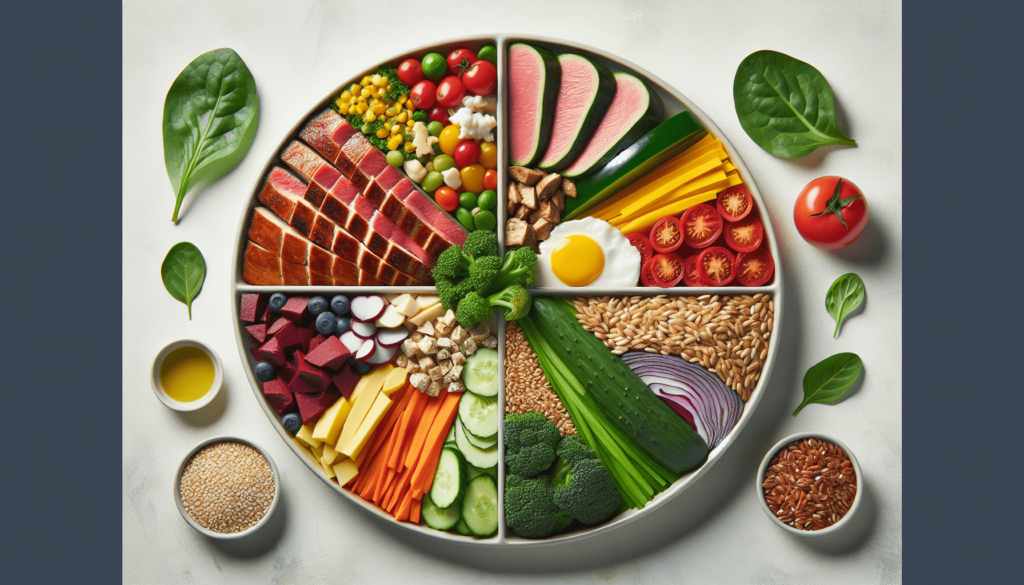Navigating the world of healthy eating can often feel like a daunting task, especially when it comes to managing portion sizes. But don’t worry, you’re not alone in this! By understanding the importance of portion control and learning a few practical strategies to measure and manage your food intake, you can maintain a balanced diet without feeling deprived or overwhelmed. From using smaller dishes to understanding food labels, these tips will help you become more mindful of how much you eat and guide you toward making healthier eating choices every day.

Have you ever wondered how exactly you can manage portion sizes effectively?
Navigating portion control can be trickier than a maze. Whether it’s scooping rice onto your plate or deciding how many chicken wings are just right, managing portion sizes is crucial not only for maintaining a healthy weight but also for enjoying your meals without overindulgence. You’re in the right spot to uncover all the secrets behind mastering portion sizes, so let’s dive right in!
Why is Portion Control Important?
Understanding why you should keep an eye on your portions gives you a stronger platform to adopt this practice. Portion control is vital for several reasons:
- Weight Management: It helps you regulate your calorie intake without the need for drastic diets.
- Improved Digestion: Smaller, well-measured portions are easier on your digestive system.
- Nutrient Balance: By controlling portions, you can ensure a balanced intake of carbohydrates, proteins, fats, and other nutrients.
By wrapping your head around these benefits, you’ll find managing your food servings less of a chore and more of a stepping stone to a healthier lifestyle.
How to Estimate Portion Sizes Correctly
Let’s address the most common challenge you might face – how do you estimate a portion size without scales or measuring cups?
Using Your Hand as a Guide
Your hand is an excellent, always-available tool for gauging portion sizes:
- Palm of Your Hand: Use it to measure a serving size of protein, such as meat or fish. This equates to about 3-4 ounces.
- Your Fist: Great for measuring a portion of vegetables or fruit; roughly equals one cup.
- A Cupped Hand: Holds about 1/2 cup of carbs like rice or pasta.
- Your Thumb: Useful for measuring a portion of fats, about the size of a tablespoon.
With these handy measurements, you can pretty much leave those scales behind!
Understanding Food Labels
Food packaging often includes a “serving size” under the nutritional information. This can guide you on how much of that food equals one serving, helping you decide how many servings fit into your meal plan.
Strategies to Avoid Overeating
Managing portion sizes isn’t just about measuring; it’s also about setting yourself up not to overeat.
Mindful Eating
Eating mindfully involves paying full attention to the experience of eating and savoring each bite. Here’s how you can practice this:
- Eliminate Distractions: Avoid eating while watching TV or using your phone.
- Eat Slowly: Take the time to chew your food thoroughly and enjoy the flavors.
By tuning in to your hunger signals, you’ll find it easier to stop eating when you’re comfortably full.
Use Smaller Plates
Switching to a smaller plate is a surprisingly effective way to control portions without feeling deprived. A smaller plate can make a smaller serving of food appear more satisfying.

What About Eating Out?
Dining out doesn’t have to mean ditching your portion control efforts. You can still enjoy a meal out with friends without overdoing it.
How to Choose Wisely at Restaurants
- Share Meals: Consider splitting larger portions with a friend.
- Ask for Half Portions: Some restaurants offer half-sized servings upon request.
- Pack Half To Go: Another strategy is to ask for a takeout box early and pack up half of your meal to enjoy later.
Restaurants typically serve much larger portions than you’d normally eat at home, so these strategies can help keep your intake in check.
The Role of Meal Planning
Planning your meals ahead of another busy week can do wonders for portion control:
- Pre-Portion Your Meals: When meal prepping, divide cooked food into portion-controlled containers.
- Plan for Variety: By planning different meals, you ensure a balanced intake of nutrients and avoid the monotony that can lead to overeating.
Meal planning doesn’t just help with portion control; it’s also a time and money saver.
Emotional Eating and Portion Control
Sometimes, the challenge with portion control is emotional rather than physical. Emotional eating can lead to eating too much or choosing unhealthy foods.
Recognizing Emotional Eating
Spotting the signs of emotional eating can help you address it:
- Eating in Response to Emotions: Whether it’s stress, sadness, or boredom, eating due to an emotional reason can disrupt your portion control efforts.
- Craving Specific Foods: Emotional eating often involves cravings for sugar-laden or high-fat foods.
Strategies to Combat Emotional Eating
- Seek Emotional Support: Talk to a friend or consider professional help to manage the emotions leading to overeating.
- Develop Healthy Coping Mechanisms: Activities like walking, journaling, or practicing yoga can reduce emotional reliance on food.
Understanding that your emotions can influence your eating habits is the first step toward better portion management.
Incorporating Technology
In today’s digital age, technology can be a great ally in managing portion sizes.
Useful Apps and Tools
- Food Tracking Apps: Apps like MyFitnessPal allow you to log what you eat and keep track of portion sizes easily.
- Digital Kitchen Scales: For those who prefer precise measurements, a kitchen scale can ensure you’re right on track.
These tools make it easier to stick to your portion goals, especially when you’re just starting out.
Frequently Asked Questions (FAQ)
Q: Can I ever indulge in larger portions? A: Yes, of course! The key is moderation. Allow yourself occasional indulgences, especially on special occasions. The goal is sustainability, not restriction.
Q: How do portion sizes vary by food type? A: Different foods have different caloric densities. For instance, vegetables are generally lower in calories than nuts or cheeses, so you can eat a larger volume of them for the same number of calories. Understanding these differences can help you balance your meals effectively.
Q: What if I’m still hungry after eating my portion? A: It’s important to listen to your body. If you’re still truly hungry, eat a bit more, preferably something nutrient-dense. Over time, your body will adapt to the new portion sizes.
Wrapping Up
Managing portion sizes isn’t about restrictions or complicated calculations; it’s about developing awareness and making informed decisions about how much you eat. Once you start applying the tips mentioned, you’ll likely find it more intuitive. Remember, the goal of portion control is to nourish your body and enjoy your food without overindulgence. So, here’s to your health and to enjoying every single bite—responsibly, of course!
